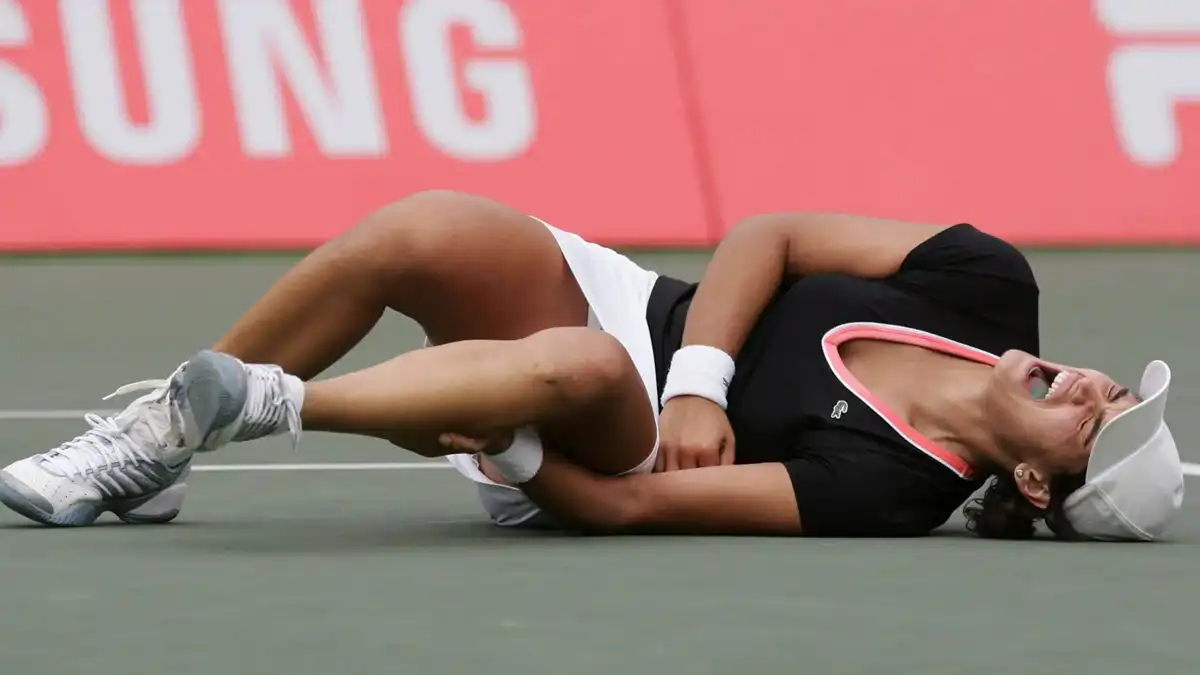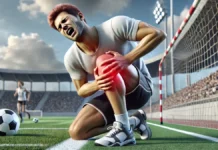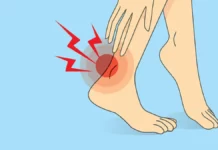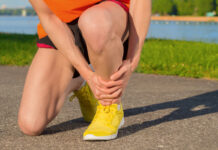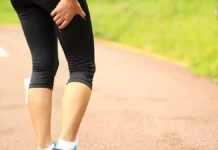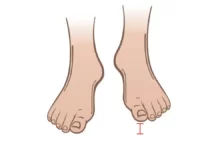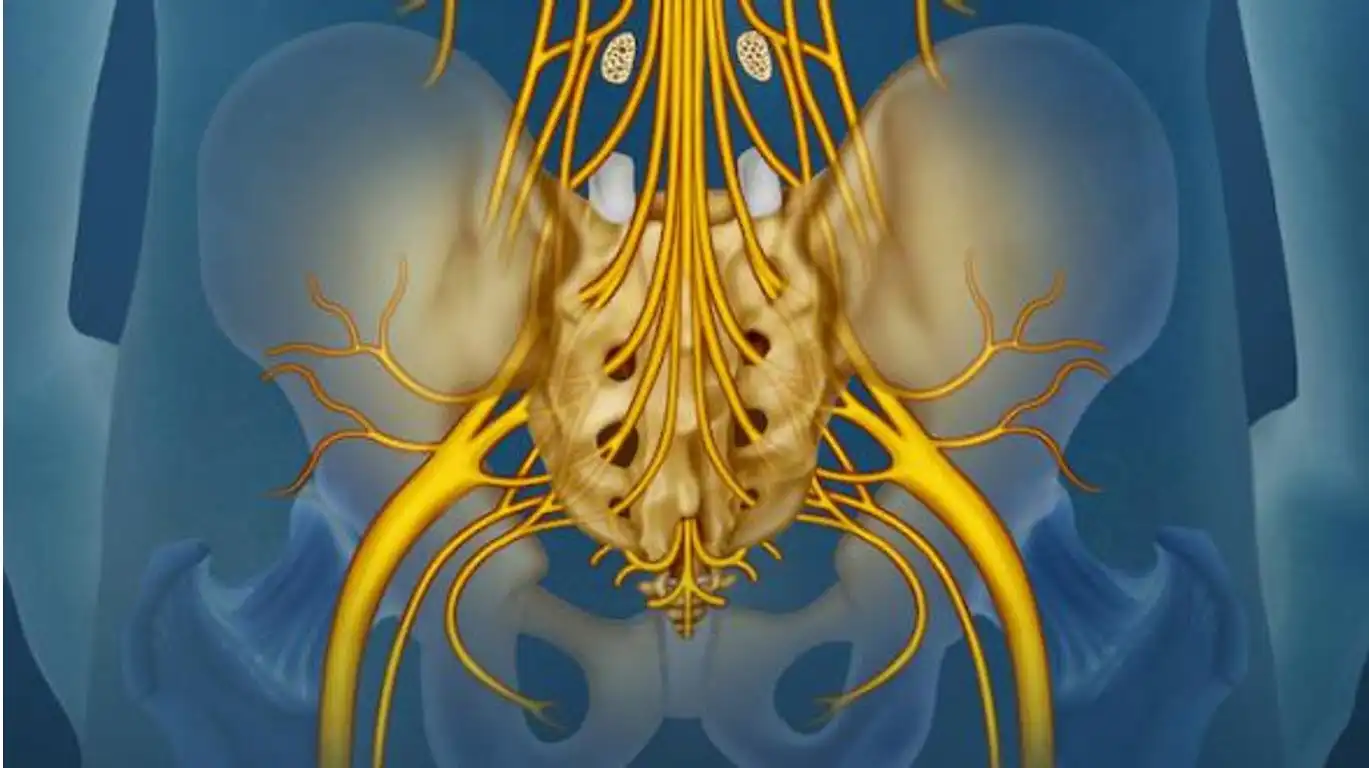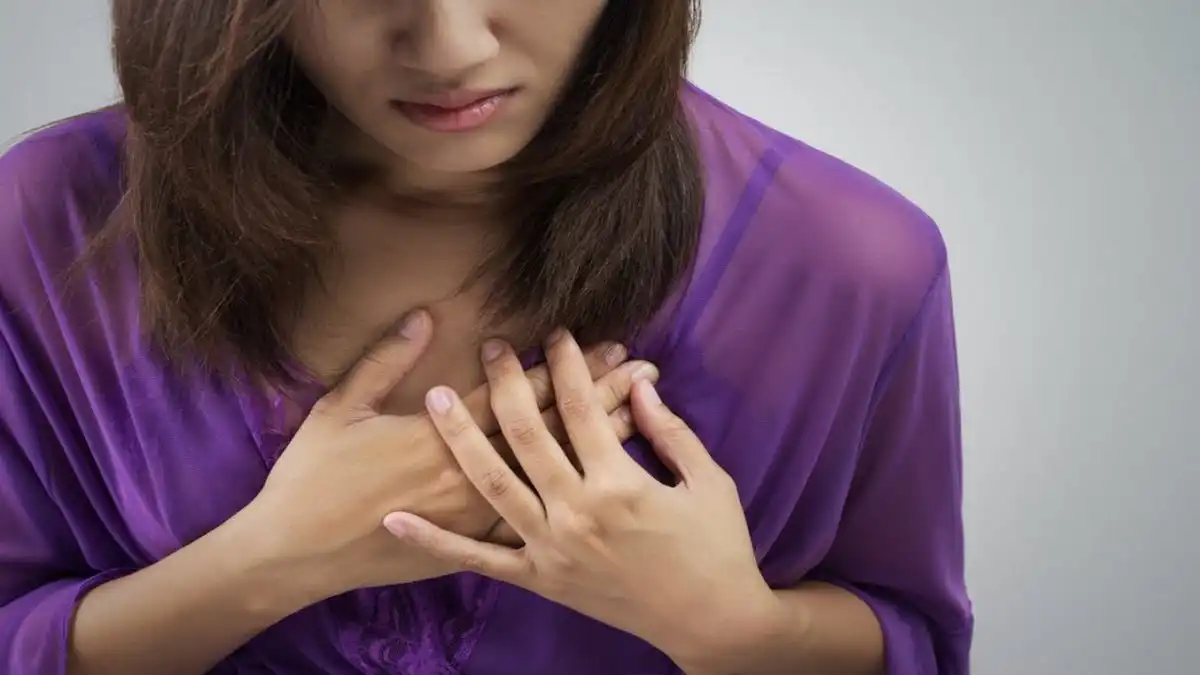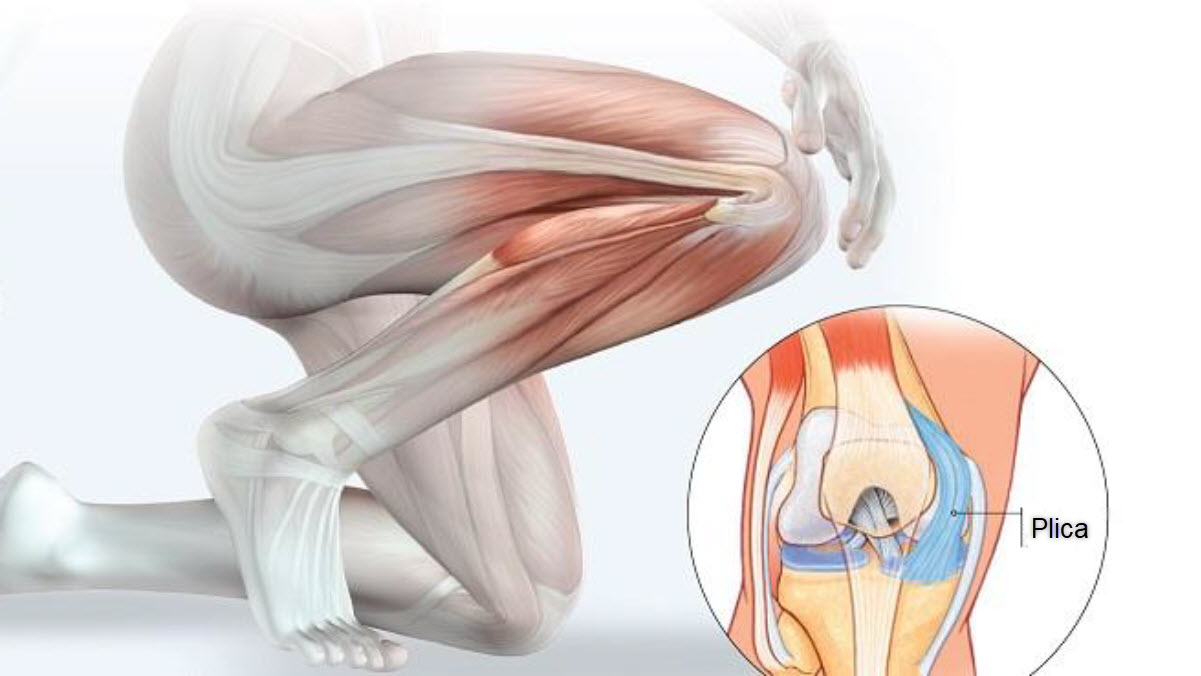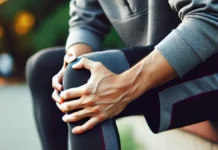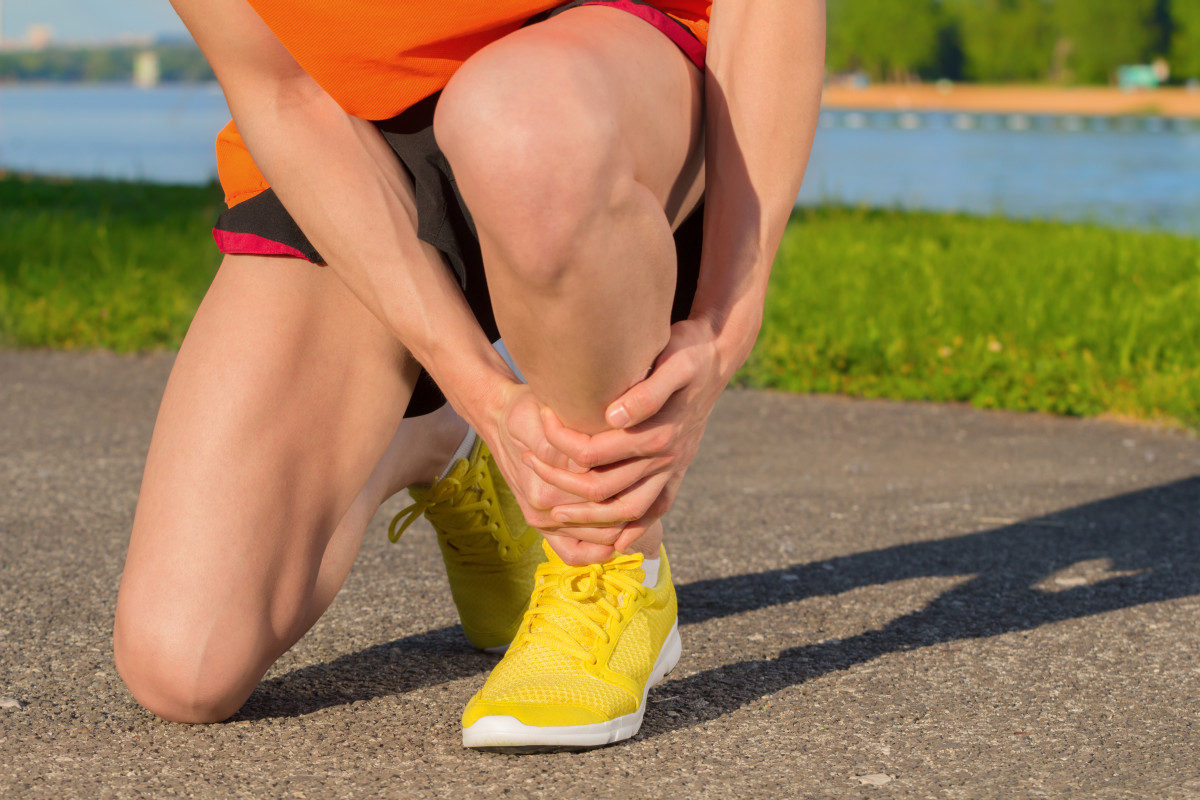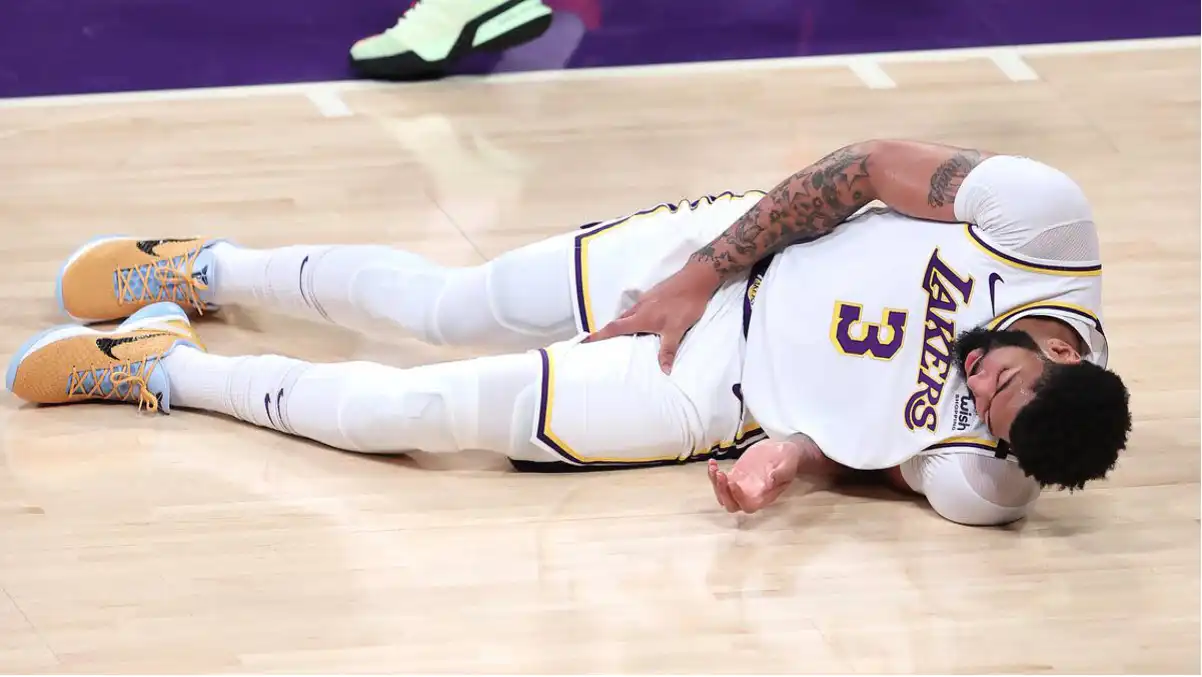Gastrocnemius or tennis leg sprain refers to acute pain in the calf due to a tear of the medial gastrocnemius. This injury is usually suffered by middle-aged people, incurred with extension of the knee and forced dorsiflexion of the ankle.
Introduction
Tennis leg, medically referred to as medial gastrocnemius strain, is a specific type of injury that affects the calf muscle. This condition typically occurs when there is a forceful and abrupt contraction of the calf muscle, leading to damage in the musculotendinous junction. Despite its name, tennis leg is not exclusive to tennis players and can affect individuals participating in various sports or activities that involve sudden bursts of movement, acceleration, or deceleration.
The primary symptom of tennis leg is a sharp pain in the calf, often accompanied by swelling and bruising. The injury usually occurs during activities that demand quick changes in direction, explosive pushes off the foot, or sudden stops. Tennis players, basketball players, and runners are particularly susceptible due to the dynamic and high-impact nature of their sports.
One common cause of tennis leg is inadequate warm-up or poor conditioning before engaging in physical activities. Insufficient stretching and preparation of the calf muscles make them more vulnerable to strain, especially when subjected to the intense and rapid movements associated with sports. Athletes who neglect proper warm-up routines increase their risk of sustaining a medial gastrocnemius strain.
Overexertion and muscle fatigue are significant contributors to tennis leg. When the calf muscles are fatigued, they are less capable of effectively absorbing and dissipating the forces generated during physical activity, making them more prone to injury. Prolonged and intense training sessions without adequate rest and recovery periods can heighten the risk of developing tennis leg.
Muscle imbalances and weaknesses in the lower extremities can also play a role in the onset of tennis leg. If certain muscles, particularly those surrounding the calf, are weaker than others, it can lead to an uneven distribution of forces during movement. Over time, this imbalance can result in excessive stress on the medial gastrocnemius, making it susceptible to injury during sports activities.
Inadequate footwear is another potential cause of tennis leg. Ill-fitting shoes or those lacking proper support can alter the biomechanics of the lower limbs, increasing the strain on the calf muscles. Athletes should ensure they wear appropriate footwear designed for their specific sport and replace worn-out shoes to reduce the risk of injury.
Causes of tennis leg
Tennis leg, a colloquial term for a condition known as medial gastrocnemius strain, typically occurs when there is a sudden and forceful contraction of the calf muscle, leading to damage in the musculotendinous junction. This injury is commonly associated with activities that involve rapid acceleration or deceleration, sudden changes in direction, or explosive pushing off, such as those seen in tennis, hence the name.
One primary cause of tennis leg is an inadequate warm-up before engaging in physical activities. Insufficient stretching and preparation of the calf muscles can make them more susceptible to strain, especially when subjected to sudden and intense movements. Athletes, including tennis players, are at a higher risk of tennis leg if they neglect proper warm-up routines.
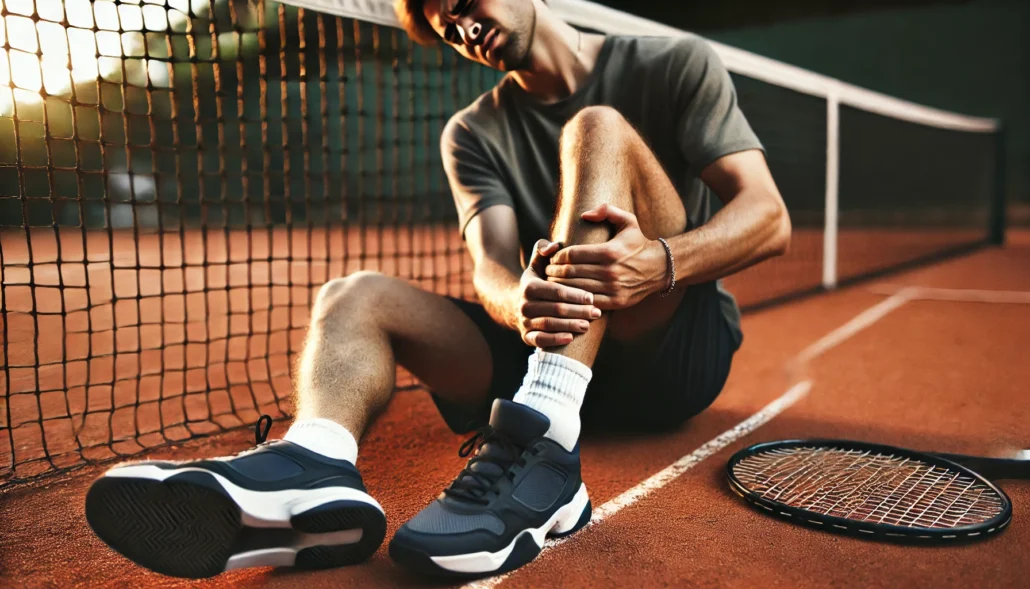
Overexertion or fatigue of the calf muscles is another significant factor contributing to tennis leg. When the muscles are tired, they are less able to absorb and dissipate the forces generated during physical activity, making them more prone to injury. Prolonged and intense training sessions, particularly without adequate rest and recovery, increase the likelihood of developing tennis leg.
Muscle imbalances and weaknesses in the lower extremities can also play a role in the onset of tennis leg. If certain muscles, particularly those surrounding the calf, are weaker than others, it can lead to an uneven distribution of forces during movement. Over time, this imbalance can result in excessive stress on the medial gastrocnemius, making it susceptible to injury during sports activities.
Inadequate footwear or sudden changes in footwear can contribute to tennis leg. Ill-fitting shoes or a lack of proper support can alter the biomechanics of the lower limbs, increasing the strain on the calf muscles. Athletes should ensure they wear appropriate footwear designed for their specific sport and replace worn-out shoes to reduce the risk of injury.
Environmental factors, such as playing on uneven surfaces or slippery courts, can also heighten the risk of tennis leg. Uneven terrain can challenge the stability of the lower limbs, potentially leading to missteps and increased stress on the calf muscles. Ensuring a safe and well-maintained playing surface is crucial in preventing tennis leg injuries.
In summary, the causes of tennis leg are multifaceted, often stemming from a combination of inadequate warm-up, muscle fatigue, imbalances, footwear issues, and environmental factors. Athletes, particularly those involved in sports with dynamic movements, should prioritize proper conditioning, regular rest, and appropriate gear to minimize the risk of developing tennis leg and other related injuries.
Mechanism of injury
The knee of the rear leg is extended while the foot is dorsiflexed, which places maximum tension on the already elongated gastrocnemius muscle; at the moment of “leg push”, a tear occurs.

Symptoms of Tennis Leg
Tennis leg symptoms can vary depending on the severity of the tear, but they generally include the following
- Acute pain: Tennis leg injury is often associated with sudden, sharp pain in the calf. Some patients describe this sensation as tearing or stabbing.
- Swelling: Swelling may develop in the affected area, resulting from irritation and inflammation of the soft tissues.
- Hematoma: Bruising or hematoma may appear around the area of the muscle tear due to internal bleeding.
- Difficulty walking: Due to pain and weakening of the affected muscle, individuals may experience difficulty walking or bearing weight on the injured leg.
- Muscle stiffness: The gastrocnemius muscle may become stiff due to the injury, leading to decreased flexibility in the calf.
- Loss of strength: A muscle tear can cause a loss of muscle strength, limiting the ability to push or lift the ball of the foot.
- Tender points: When palpating the affected area, there may be specific points that trigger pain or tenderness.
- Limitation of movement: Movements that stretch or contract the gastrocnemius muscle, such as dorsiflexion of the foot, can be painful and limited.
Diagnosis Techniques
Accurate diagnosis of tennis leg, or medial gastrocnemius strain, is critical to ensuring effective treatment and recovery. Healthcare professionals employ a combination of clinical examinations, imaging techniques, and differential assessments to confirm the injury and rule out other potential conditions. Early diagnosis not only reduces the risk of complications but also accelerates the healing process.
Clinical Examinations
The diagnostic process typically begins with a detailed medical history and physical examination. During this assessment, healthcare professionals focus on:
- Patient History:
- Patients are asked about the onset of symptoms, type of activity leading to the injury, and any prior history of similar issues. Sudden sharp pain in the calf during activity is a hallmark symptom.
- Physical Examination:
- Palpation: Gentle pressing of the calf identifies tender areas, swelling, or a palpable gap in the muscle, which can indicate the severity of the strain.
- Range of Motion Tests: The patient may be asked to perform movements like dorsiflexion and plantarflexion. Pain during these actions suggests involvement of the gastrocnemius.
- Thompson Test: This test helps rule out an Achilles tendon rupture. The patient lies prone while the examiner squeezes the calf. If the foot doesn’t plantarflex, it indicates a tendon rupture rather than a tennis leg injury.
Imaging Techniques
While clinical assessments are often sufficient for diagnosing mild to moderate cases, imaging techniques provide a more detailed understanding, particularly in severe or unclear cases.
- Ultrasound:
- Ultrasound imaging is a non-invasive and cost-effective method to visualize the tear in the gastrocnemius muscle. It is especially useful for identifying the location and extent of the injury, as well as ruling out other conditions like deep vein thrombosis (DVT).
- Magnetic Resonance Imaging (MRI):
- An MRI provides high-resolution images of soft tissues, making it the gold standard for diagnosing severe strains. It can differentiate between a partial and complete tear, assess surrounding tissue damage, and identify any complications.
- X-Rays:
- While X-rays do not show soft tissue injuries, they may be used to rule out fractures or other bone-related issues if trauma is suspected.
Differential Assessments
To confirm tennis leg, healthcare providers must rule out other conditions with overlapping symptoms, such as:
- Deep Vein Thrombosis (DVT): Doppler ultrasound is used to detect blood clots.
- Achilles Tendon Rupture: The Thompson Test or imaging can distinguish this condition from tennis leg.
- Compartment Syndrome: Pressure monitoring is performed if swelling and pain are excessive.
Tools and Tests
Healthcare professionals commonly use tools and techniques like:
- Goniometers: To measure joint angles and assess range of motion limitations.
- Muscle Strength Testing: Evaluating the calf’s ability to bear weight or resist force.
- Diagnostic Ultrasound Devices: To quickly identify muscle tears and assess healing progress during follow-ups.
Importance of Accurate Diagnosis
An accurate diagnosis ensures that treatment strategies, such as rest, rehabilitation, or surgical intervention (in severe cases), are tailored to the individual’s specific needs. Misdiagnosis can lead to prolonged recovery or complications, such as chronic pain or re-injury. Early intervention guided by reliable diagnostic techniques provides the foundation for a successful recovery and return to activity.
By employing these diagnostic tools and techniques, healthcare professionals can precisely identify tennis leg and create a comprehensive treatment plan to restore functionality and prevent future injury.
Differential diagnoses of tennis leg
- Achilles Tendon Rupture: This injury involves the rupture of the Achilles tendon, located at the back of the ankle. Symptoms may include sudden pain, swelling, weakness, and difficulty walking.
- Deep Vein Thrombosis (DVT): A deep vein thrombosis is the formation of a blood clot in a deep vein, often in the leg. Symptoms may include pain, swelling, redness, and warmth in the leg.
- Muscle cramps: Severe muscle cramps can sometimes be confused with tennis leg. However, cramps are usually temporary and can be relieved by stretching.
- Muscle strain: A muscle strain is less serious than a muscle tear. Symptoms may include muscle pain and stiffness, but usually without significant muscle fiber breakdown.
- Compartment syndrome: This condition results from increased pressure in muscle compartments, causing pain, swelling and tenderness. This can be more serious in some cases.
- Leg Fracture: A leg fracture can cause severe pain and difficulty bearing weight. It can be caused by direct or indirect trauma.
- Tendonitis: Inflammation of the tendon, called tendinitis, can cause similar pain. This may be due to overuse or repetitive movements.
- Sciatic neuralgia: Irritation of the sciatic nerve can cause leg pain, often associated with numbness or tingling.
Prognosis and Recovery Timeline
The prognosis for tennis leg, or medial gastrocnemius strain, largely depends on the severity of the injury, the individual’s age, and the adherence to appropriate rehabilitation protocols. With timely intervention and proper care, most individuals can expect a full recovery, though the timeline varies based on the extent of the muscle damage.
Recovery Timeline
- Mild Injuries (Grade 1):
Mild strains involve minimal tearing of the muscle fibers and typically present with mild pain, slight stiffness, and limited swelling. Recovery from mild injuries often takes 1 to 2 weeks, during which rest, gentle stretching, and low-impact activities can aid healing. - Moderate Injuries (Grade 2):
Moderate strains involve partial tearing of the muscle fibers, resulting in more significant pain, swelling, and difficulty walking. Recovery for moderate injuries can take 3 to 6 weeks, depending on the individual’s adherence to a structured rehabilitation program. During this period, physiotherapy and progressive strengthening exercises are essential to restore function. - Severe Injuries (Grade 3):
Severe strains involve complete tearing of the muscle, which may require surgical intervention in rare cases. Symptoms include severe pain, extensive swelling, and an inability to bear weight. Recovery for severe injuries typically takes 3 to 6 months, with longer timelines if surgery or complications arise. Extensive physiotherapy and gradual reintroduction to activity are critical for achieving optimal recovery.
Factors Affecting Prognosis
Several factors influence the prognosis and recovery duration for individuals with tennis leg:
- Age:
Younger individuals generally recover faster due to better tissue elasticity, stronger healing capacity, and higher levels of physical fitness. Older adults may face prolonged recovery due to decreased muscle elasticity and slower healing processes. - Severity of Injury:
The extent of the tear significantly impacts recovery time. While mild strains heal quickly, moderate to severe injuries require prolonged rehabilitation and may result in residual stiffness or strength deficits if not properly managed. - Adherence to Rehabilitation:
Strict adherence to physiotherapy and rehabilitation programs is critical. Neglecting prescribed exercises, resuming physical activity too early, or failing to address underlying muscle imbalances can prolong recovery and increase the risk of re-injury. - Overall Fitness and Health:
Pre-existing conditions, poor overall fitness, or inadequate muscle conditioning can negatively influence prognosis. Conversely, individuals with a strong baseline level of fitness and good muscle strength often recover more quickly. - Timely Intervention:
Early diagnosis and treatment significantly improve outcomes. Prompt application of the RICE protocol, followed by guided rehabilitation, minimizes complications and accelerates healing.
Long-Term Outlook
With appropriate care and rehabilitation, most individuals can achieve full recovery and return to their regular activities. However, improper management or repeated injuries can lead to chronic issues, such as persistent pain, weakness, or limited mobility. Preventative measures, including regular conditioning, proper footwear, and adequate warm-ups, play a key role in avoiding recurrence and maintaining long-term musculoskeletal health.
Preventative Measures for Tennis Leg
Preventing tennis leg, or medial gastrocnemius strain, is crucial for athletes and individuals who engage in activities involving sudden, forceful movements. By incorporating specific warm-up routines, targeted strengthening exercises, and adopting healthy lifestyle practices, the risk of injury can be significantly reduced. A proactive approach to prevention not only safeguards the calf muscles but also enhances overall performance and resilience.
Warm-Up and Stretching Routines
A proper warm-up routine is essential to prepare the muscles for physical activity. Warming up increases blood flow to the muscles, raises their temperature, and enhances flexibility, reducing the likelihood of strains or tears. Specific recommendations include:
- Dynamic Warm-Up:
- Perform light cardiovascular exercises, such as jogging or jumping jacks, for 5–10 minutes to gradually increase heart rate and circulation.
- Incorporate dynamic stretches like leg swings, calf raises, and walking lunges to activate the gastrocnemius and surrounding muscles.
- Static Stretching Post-Activity:
- After exercise, focus on static stretches to improve muscle length and flexibility. Hold each stretch for 20–30 seconds, targeting the calf muscles.
- Examples include:
- Standing Calf Stretch: Place one foot behind the other, keeping the back leg straight and pressing the heel into the ground.
- Seated Calf Stretch: Sit with legs extended, loop a resistance band or towel around the ball of the foot, and gently pull toward the body.
Regularly incorporating these routines into pre- and post-activity habits can significantly lower the risk of calf injuries.
Strengthening Exercises
Strengthening the gastrocnemius, soleus, and supporting muscles in the lower leg can improve stability and reduce strain during physical activities. Key exercises include:
- Calf Raises:
- Stand on a flat surface or edge of a step with heels hanging off. Raise onto the balls of the feet, hold briefly, and lower slowly.
- Perform 2–3 sets of 15–20 repetitions to build strength and endurance.
- Eccentric Heel Drops:
- Stand on a step with one foot. Lower the heel below the step’s edge slowly and return to the starting position. This targets the musculotendinous junction.
- Toe Walks:
- Walk on the balls of the feet for 1–2 minutes to engage the calf muscles and improve balance.
- Single-Leg Balancing:
- Stand on one leg and maintain balance for 30–60 seconds. This enhances proprioception and reduces muscle imbalances.
By regularly performing these exercises, the calf muscles gain strength and resilience, better equipping them to handle the demands of dynamic movements.
Hydration and Nutrition
Proper hydration and nutrition are fundamental to muscle health and injury prevention. Dehydration can lead to muscle fatigue, cramps, and decreased performance, increasing the risk of strains. Key tips include:
- Hydration:
- Drink water consistently throughout the day, especially before, during, and after exercise.
- For intense or prolonged activities, consider electrolyte-replenishing drinks to maintain hydration balance.
- Nutrition:
- Consume a balanced diet rich in proteins, carbohydrates, and healthy fats to support muscle repair and energy.
- Focus on nutrients like magnesium, potassium, and calcium, which help prevent muscle cramps and maintain healthy muscle function.
- Timing:
- Eat a small, balanced meal or snack 1–2 hours before exercise to provide energy and avoid fatigue during activity.
Long-Term Prevention
In addition to warm-ups, strengthening routines, and proper hydration, wearing appropriate footwear, maintaining good posture, and scheduling rest days are vital for long-term injury prevention. Replacing worn-out shoes and avoiding overtraining can further reduce stress on the calf muscles.
By prioritizing these preventative measures, athletes and active individuals can significantly lower their risk of experiencing tennis leg and other related injuries, ensuring optimal performance and long-term musculoskeletal health.
Role of Osteopathy
Osteopathy can be a useful adjunct in the treatment of “tennis leg” by working on the muscular, joint and tissue structure and function of the affected area. It is important to note that osteopathy does not replace conventional medical treatments, but can be integrated in collaboration with other medical approaches. Here is how osteopathy can be considered in the context of tennis leg:
- Overall Assessment: An osteopath will begin with a comprehensive assessment of the person, examining not only the tennis leg area, but other parts of the body as well. The osteopathic approach is based on understanding the overall balance of the body.
- Correction of postural imbalances: The osteopath can work on correcting postural imbalances that could contribute to the injury. This could include adjustments to the spine and adjacent joints.
- Myofascial Release: Myofascial release techniques aim to release tension in the muscles and fascia that may contribute to the pain and limitation of movement associated with tennis leg.
- Joint Mobilization: Gentle joint mobilization techniques can be used to improve joint mobility in the tennis leg region.
- Stretching and strengthening: The osteopath may recommend specific stretching and strengthening exercises to promote healing and prevent recurrence.
- Lifestyle advice and prevention: The osteopath can provide advice on lifestyle modifications, including recommendations on ergonomics, physical activity and prevention of future injuries.
- Collaboration with other professionals: Depending on the severity of the injury, the osteopath may collaborate with other health professionals, such as doctors, physiotherapists or sports specialists, to ensure a holistic approach to the injury. recovery.
Conclusion
Tennis leg, or medial gastrocnemius strain, is a common yet preventable injury that can significantly impact an individual’s mobility and quality of life. This condition is not limited to tennis players but affects people across various sports and activities involving sudden and forceful movements. By understanding the underlying causes, symptoms, and mechanisms of injury, individuals and healthcare providers can take steps to manage and prevent this debilitating condition.
The key to addressing tennis leg lies in early recognition and appropriate treatment. Prompt intervention using the RICE protocol—rest, ice, compression, and elevation—can alleviate pain and inflammation in the acute phase of the injury. For more severe cases, professional evaluation may be necessary to rule out differential diagnoses like Achilles tendon rupture, deep vein thrombosis, or compartment syndrome. Advanced diagnostic tools such as ultrasound and MRI are valuable for confirming the extent of the injury and guiding treatment plans.
Rehabilitation and recovery are essential to restoring full functionality after a tennis leg injury. Physiotherapy, including targeted stretching and strengthening exercises, plays a crucial role in improving muscle strength, flexibility, and balance. Techniques like myofascial release and joint mobilization, often provided by osteopaths, can help reduce tension and enhance tissue healing. Collaborating with healthcare professionals, including osteopaths, physiotherapists, and sports medicine specialists, ensures a comprehensive and personalized recovery plan.
Preventative measures are equally important in mitigating the risk of tennis leg. Adequate warm-up routines, regular stretching, and strengthening exercises for the calf muscles can enhance muscle resilience and reduce the likelihood of injury. Addressing muscle imbalances and ensuring proper biomechanics are critical, especially for athletes engaged in high-intensity sports. Proper footwear selection, appropriate for the activity and tailored to individual needs, can also play a significant role in injury prevention.
For those who have experienced a tennis leg injury, patience and adherence to recovery protocols are vital for minimizing the risk of re-injury. Overexertion and premature return to high-intensity activities can compromise the healing process and lead to chronic issues. A gradual return to physical activities, guided by a healthcare professional, ensures optimal recovery and long-term functionality.
References
- Bryan Dixon J. Gastrocnemius vs. soleus strain: how to differentiate and deal with calf muscle injuries. Curr Rev Musculoskelet Med. 2009 Jun;2(2):74-7. [ PMC free article ] [ PubMed ]
- Anouchi YS, Parker RD, Seitz WH. Posterior compartment syndrome of the calf resulting from misdiagnosis of a rupture of the medial head of the gastrocnemius. J Trauma. 1987 Jun;27(6):678-80. [ PubMed ]
- Campbell J.T. Posterior calf injury. Foot Ankle Clin. 2009 Dec;14(4):761-71. [ PubMed ]
- Chang KV, Wu WT, Özçakar L. Ultrasonography Imaging for the Diagnosis and Guided Injection of Plantaris Tendon Strain in a Patient With TennisLeg . Am J Phys Med Rehabil. 2018 Jun;97(6):e60-e61. [ PubMed ]
- Froimson AI. Tennisleg . JAMA. 1969 Jul 21;209(3):415-6. [ PubMed ]
- Cibulka M, Wenthe A, Boyle Z, Callier D, Schwerdt A, Jarman D, Strube MJ. VARIATION IN MEDIAL AND LATERAL GASTROCNEMIUS MUSCLE ACTIVITY WITH FOOT POSITION. Int J Sports Phys Ther. 2017 Apr;12(2):233-241. [ PMC free article ] [ PubMed ]
- Shields CL, Redix L, Brewster CE. Acute tears of the medial head of the gastrocnemius. Foot Ankle. 1985 Jan-Feb;5(4):186-90. [ PubMed ]
- Chang KV, Wu WT, Özçakar L. Ultrasound Imaging for Posterior Knee Pain: Tibial Nerve Schwannoma Not Popliteus Muscle Strain. Med Ultrasound. 2017 Apr 22;19(2):237-238. [ PubMed ]

